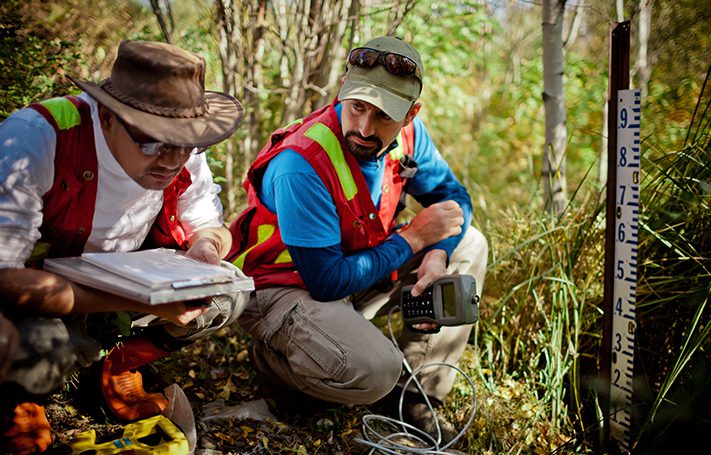Inflation Reduction Act’s Impact on 179D: Prevailing Wag...
179D – Energy Efficient Commercial Building Deduction The Internal Revenue Service Section ...

The urban agricultural sector is gaining prominence as a key player that pioneers innovations and the solutions of tomorrow to the food-related challenges that our world faces today. With the inevitable increased shift in the US population from rural to urban areas, urban farming and the commercial activities associated to it have and continue to experience rapid growth. This is a great time to learn and invest in R&D Tax Credits and qualifying activities for agriculture industry!
The popularization of this practice has pushed business owners, farmers and researchers towards Research and Development (R&D) efforts with the purpose of minimizing food mileage, crop losses and agricultural plastic waste (APW) whilst maximizing crop yield, local food sourcing, water and nutrient usage efficiency and more. Technology has also taken a foothold in the innovative progression of the urban agriculture industry with the integration of automated machinery, computer modelling, geographic information systems (GIS) and remote sensing.
Within this ever-evolving industry, capitalization of tax incentives is an important step to re-investing in business potential and promoting further innovative growth. Since the permanent extension of the R&D Tax Credit, eligible companies can claim the Federal tax incentive for their qualified day-to-day operations as a means to offset their annual income and/or payroll tax liability on a dollar-for-dollar basis. Many states also offer their exclusive version of the R&D Tax Credit which can be claimed in conjunction to the Federal one to further reclaim qualified R&D expenses.
The R&D Tax Credit is a Federal tax incentive which, initially, was a temporary strategic tool set forth by the government to incite private industries to invest in R&D to advance their economies. With the enactment of the Protecting Americans from Tax Hikes (PATH) Act in 2015, the R&D Tax Credit was permanently extended to reward industries, irrespective of size, conducting qualified research on American soil by enabling them to potentially reduce their annual income liability in a given taxable year on a dollar-for-dollar basis.
Companies can retroactively claim on amended returns generally up to three years from the filing of an original tax return with no upper limit on the amount of qualified R&D expenditures given proper documentation and can continue to claim the R&D Tax Credit each year on qualified activities to create value efficiency. Alternatively, the R&D Tax Credit can be carried forward up to 20 years to reduce any future tax liability.
To further incentivize businesses in conducting R&D, the majority of states offer their own version of the R&D Tax Credit for eligible businesses which allows them to offset state tax liability on top of federal. For companies that are qualified small businesses that engage in qualified research activities can elect to take all or a portion of their credit against their old age, survivors, and disability insurance (OASDI) liability as a payroll offset, providing a source of cash flow at critical times.
Code 41 of the Internal Revenue Code (IRC), outlines that research activities conducted by companies must fully abide by the four-part test to qualify for the R&D Tax Credit. The four-part test is as follows:
A key takeaway concerning qualified research is that the failure to develop or improve upon a business component does not disqualify a company from being eligible for the R&D Tax Credit so long as every element of the four-part test is respected. What follows are but a few examples of potentially qualifying research activities within the urban agriculture industry:
QREs refer to the sum of in-house research expenses and contract research expenses incurred when performing qualified research. These include:
The technical and financial nature of the R&D Tax Credit can present a significant challenge for enterprises seeking to accurately pinpoint which of their business components qualify for the tax incentive under Code 41 of the IRC and how to proceed with the claim. Therefore, it is indispensable to work with a firm whose core expertise lies in aiding its clients recoup qualified R&D expenditures and maximize their tax credit.
At Leyton, we employ a dual-approach methodology where our agricultural technical specialists and tax professionals work in a non-disruptive manner with your company to help substantiate your claim in a holistic framework with technical analysis of your qualified research and supporting documentation.
Author:
Youngsoo Ryan Lee, CEP, B.Eng.
Engineering Analyst – Leyton USA
Founded in 1997, Leyton is a global innovation funding consultancy dedicated to helping our clients improve their business performance. In the US, our specific expertise is in optimization of Federal and State Research & Development (R&D) Tax Credits. As a business, we want to help unleash our clients potential and be a strategic partner in their evolution and growth.
Explore our latest insights
See more arrow_forward
179D – Energy Efficient Commercial Building Deduction The Internal Revenue Service Section ...

The US R&D Tax Credit has emerged as a game-changer, offering substantial benefits to fuel th...

Overview In the wake of the AI boom, sparked by pioneers like Geoffrey Hinton, Yoshua Bengio, and...

Overview Energy Star Certification for homes was established in 1996. With changes to the 45L tax...